T&H employee-owners enjoyed the annual Thanksgiving Luncheon on Tuesday, November 22, and as always, it was a big success. Employee-owners were encouraged to bring in their favorite foods and take some time to appreciate the holiday season. In addition, we were lucky to have some fellow employee-owners from our satellite offices to join us for the food and fun. For our six newest engineers, it was a memorable first Thanksgiving celebration at T&H. There was great food, great people, and a lot of laughs.
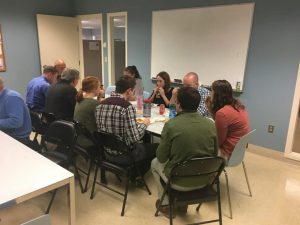
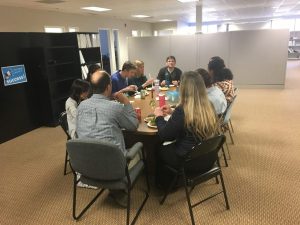
Tag: Thanksgiving
Giving Thanks – for Water!
 It is widely known how important water is to our lives and the world we live in. Our body and planet is comprised of about 70% water – making it seem like it is easily accessible and plentiful. However, when you rule out our oceans and ice caps, less than 1% of all the water on Earth is drinkable. Of that less than 1%, groundwater only accounts for 0.28% of fresh water around the globe. Safe drinking water is a privilege we often take for granted while we brush our teeth or drink a glass of water in the morning. While we are giving thanks to our family, friends, and food during Thanksgiving, we should also give big thanks for our clean drinking water and the people who make it happen.
It is widely known how important water is to our lives and the world we live in. Our body and planet is comprised of about 70% water – making it seem like it is easily accessible and plentiful. However, when you rule out our oceans and ice caps, less than 1% of all the water on Earth is drinkable. Of that less than 1%, groundwater only accounts for 0.28% of fresh water around the globe. Safe drinking water is a privilege we often take for granted while we brush our teeth or drink a glass of water in the morning. While we are giving thanks to our family, friends, and food during Thanksgiving, we should also give big thanks for our clean drinking water and the people who make it happen.
The Importance of Clean Water
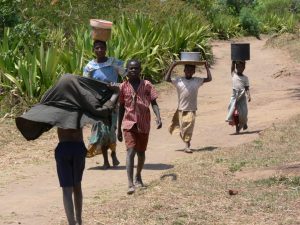
Keeping yourself hydrated can do wonders for your health. The benefits water provides for our bodies range from relieving headaches, flushing toxins out of the body, improving mood, helping with weight loss, and relieving fatigue. In the U.S., we are fortunate enough to have some of the cleanest drinking water anywhere in the world to keep us healthy and safe. In other countries and for some 783 million people, that is not the case. Many do not have access to sufficient drinking water and the water they do have often contains dangerous pathogens. Often, unclean water sources are miles from villages and some people are forced to spend hours each day simply finding and transporting water. The typical container used for water collection could weigh between 40 and 70 pounds when filled. Imagine how difficult it would be to carry the equivalent of a 5-year-old child for three hours out of each day just to have water to drink. With so many people not having access to clean drinking water around the world, it is important to appreciate the plentiful and safe drinking water we have here in America.
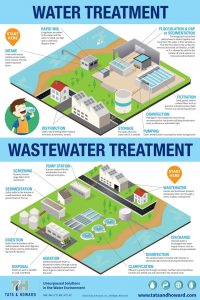
A Special Thanks for the People Who Make Our Water Safe
When looking at America’s clean water, it is especially important to give special thanks to the water and wastewater utilities that work nonstop to give us some of the cleanest drinking water in the world. Despite the fact that our country has beautiful rivers and lakes, the water that comes from them to our taps goes through several processes that require a lot of work and maintenance. Our water and wastewater utilities maintain some of the highest standards in the world when it comes to drinking water, and new innovations for treatment and distribution are always being researched and implemented. Water and wastewater employees work tirelessly to meet regulatory requirements and preserve local waterways despite major setbacks like deteriorating infrastructure and shrinking funding for necessary projects. On top of treating our water, utilities are responsible for keeping their distribution systems running efficiently and also to being stewards to the environment through improving effluent quality. Our water utilities are arguably the most important utilities in the nation because water is so crucial to our survival.
In Conclusion
We are so incredibly fortunate here in the United States to not have to think twice about the purity of water from the tap, a glass of water in a restaurant, a highway rest stop, an airport, or motel – all thanks to our water and wastewater utilities. For that, we should be especially thankful. This Thanksgiving, be sure to give special thanks for having safe drinking water and to the dedicated, hard-working people at water and wastewater utilities.
How Water Shaped the First Thanksgiving
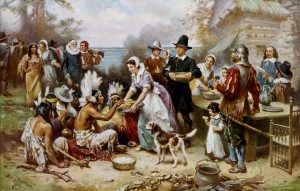
While we are celebrating Thanksgiving this week by spending time with family and indulging in an abundance of succulent foods, water is probably the furthest thing from our minds. But water played a key role in the first Thanksgiving, and was instrumental in shaping the history that has brought us to modern-day America.
The History of Pilgrims
While history books found in elementary schools across the nation commonly teach that the Pilgrims fled England in 1620 in search of religious freedom and a new life, they seldom mention that the Pilgrims were also fleeing the highly contaminated water supply of 1600’s England. Lacking any type of improved sanitation or water treatment, the water supply had become so fouled that the life expectancy of city-dwellers was down to a miserable 26 years.
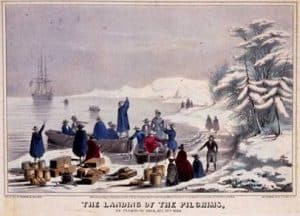
Although they had no understanding of pathogens and bacteria, the English knew that drinking plain water made them sick. Therefore, the English, including the Pilgrims, avoided drinking water, instead choosing beer and occasionally wine as their drink of choice — even for the children. During the extremely difficult, perilous 65-day journey of the Virginia-bound Mayflower, the ship ran low on beer, and the crew, not wanting to share their remaining beer supply with the Pilgrims, made the decision to land early in Massachusetts instead. The ship docked near Provincetown and, after sending out a scouting party, sailed to Plymouth where it docked for the winter. This was December of 1620.
Over the winter, over half the population of Plymouth perished from poor nutrition, inadequate living quarters, and harsh conditions. The remaining 50 English settlers would have been an easy target for the robust Indian population that had lived in the area only a few short years prior. But where were they now?
Bringing Disease to the New Land
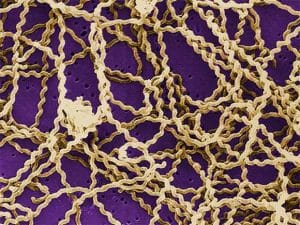
In fact, many of the local Native American tribes had been decimated by leptospirosis just a few years earlier. The epidemic, which took place between 1617-1619, was brought to the New World on explorers’ ships in the form of the black rat. Leptospirosis is a zoonotic disease whose bacterium lives in animal hosts and is transmitted from animals to humans via urine in fresh water. Non-native to North America at the time, the black rat is the only animal whose kidneys can withstand a continuous infection of leptospirosis. These rats quickly infected native species, which in turn contaminated the water supply. And because Native Americans interacted with water so much more than did Europeans – drinking, bathing (Europeans of the time did not bathe much), cranberry harvesting, fishing, and wearing animal pelts, for example — they were much more susceptible to leptospirosis fatality. Squanto, a Native American who became a friend to the Pilgrims and who negotiated a peace treaty between the Pilgrims and the Wampanoag, was the only surviving member of the Patuxet tribe. The rest had perished from leptospirosis.
Once the colonists began to form a new life during the spring of 1621, they learned about alternate food sources, most of which involved the abundant, clean water in the area. Massachusetts Bay was teaming with fish, though the Pilgrims did not have fishing gear; instead, they learned to harvest clams, mussels, and lobster from the sea. The lush area also provided habitat to waterfowl such as ducks and geese, as well as wild turkeys and other birds. The Pilgrims even learned how to catch eel in riverbeds. The first Thanksgiving was celebrated in the fall of 1621, with the 50 surviving Pilgrims and about 90 Wampanoag guests.
Looking Forward
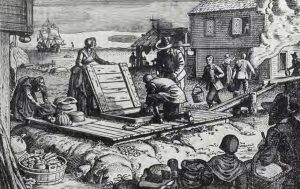
The Pilgrims had survived nearly one year in the New Land, and their future was filled with hope. These hardy people continued to build and multiply over the next few decades, and just 31 short years after the first Thanksgiving, Boston became home to what would become known as the first waterworks in the United States. In 1652, the Water-Works Company of Boston constructed a gravity conduit system that used hollowed out logs to convey water from water sources such as wells and springs to a 12’x12’ reservoir. And the rest is history.
So this Thanksgiving, raise a toast — of water — to the Native Americans and colonists who survived that harsh winter almost 400 years ago. Without them, we wouldn’t be celebrating Thanksgiving today.
Happy Thanksgiving to you and yours!
Clean Water Made the First Thanksgiving a Feast to Remember
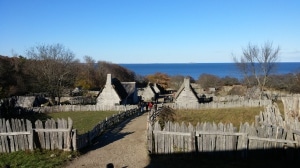 It’s Thanksgiving! It’s that time of year when we cover our table with a feast of turkey, cranberries, and potatoes and imagine that we are celebrating as the earliest settlers had nearly four hundred years ago. But more likely, the Pilgrim and Wampanoag people enjoyed a plentiful bounty of waterfowl and fish at their feast – game and seafood attracted to the area by the clean, undisturbed waters of 17th-century Massachusetts.
It’s Thanksgiving! It’s that time of year when we cover our table with a feast of turkey, cranberries, and potatoes and imagine that we are celebrating as the earliest settlers had nearly four hundred years ago. But more likely, the Pilgrim and Wampanoag people enjoyed a plentiful bounty of waterfowl and fish at their feast – game and seafood attracted to the area by the clean, undisturbed waters of 17th-century Massachusetts.
Many historians believe that turkey and potatoes were not actually present at the first Thanksgiving. Turkey did not become the poster-bird for Thanksgiving until the early 1800s. Back in 1621, the feast, which lasted three days, was comprised of foods that could easily be obtained in the region, and the local waters were an excellent resource for finding these.
According to one article, the birds that were most likely eaten were migratory ducks and geese attracted to the clean rivers, streams, and lakes of the Plymouth area. Without these clean waters attracting birds to Massachusetts, the first Thanksgiving meal would have been much less impressive than it actually was. Below the surface of the rivers and streams, and the ocean of Massachusetts where this three-day feast took place, the Pilgrims and members of the Wampanoag tribe found many delicacies to add to their dinner table. Clams, cod, lobsters, and eels were plentiful in the clean, undisturbed waters, and the early Americans took full advantage of this.
Additionally in an article from Smithsonian Magazine, there are reports that while there may have been beer at the table, there would have only been about a few gallons for 150 people over three days. The rest of the group probably washed the meal down with water. Another reason the guests at the first Thanksgiving were probably thankful for the clean waters available to them.
Water has certainly been a very important – if often overlooked- element of any Thanksgiving dinner. While you’re boiling your potatoes, and getting the lumps out of the gravy, reflect on a feast such as this without water and give thanks by conserving water in your cooking.
May you and yours enjoy a happy and “water-ful” Thanksgiving!
